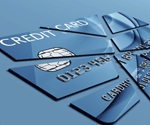The 10 most important bank weapons in the digital wallet battleground
But what exactly does that mean and how can financial institutions in particular leverage the information they have to most effectively compete? Here are 10 ways that banks can best use their data assets to win the mobile wallet wars:
1. Provision a wallet: The banks already have a wealth of data on customers. By effectively using this data, they can pre-populate the fields to accelerate the set up process for the wallet. More importantly, they can establish protocols that heighten security and reduce longer-term fraud issues.
2. Add additional cards and credentials: Your bank also has knowledge about other products and credentials that you might have. For example, if someone has both a debit and credit card with a financial institution, they could add both at the same time.
3. Promote additional cards and lending products: Once you add cards, banks can suggest additional cards and even lending programs. For example, a bank could provide offers for pre-approved auto loans within the wallet environment if the person is in an auto dealership.
4. See and manage balances available on cards: The financial institution can also provide information on balances available on cards to help people better manage their spending. That was one of the most important aspects that helped the Starbucks app become so successful.
5. Report when a payment has been made: Third party wallets know when a payment has been sent but do not always know if it has been processed. As a result, the wallets sometimes misreport that the transaction was successful when in fact it was not, causing frustration at the register. The financial institution can leverage their integration with the networks to provide that information real-time to the wallet and make the entire experience much smoother.
6. Provide receipts: As a start, the financial institutions can provide basket-level reporting on past transactions. However, there is an opportunity to also integrate forward with the retailers to provide more detailed reporting, potentially even down to the SKU level.
7. Send coupons based on spend information: Banks have partnered with companies such as Cardlytics for years to send targeted offers based on consumers’ past spend. That infrastructure can be further leveraged in the context of a payment wallet to improve the experience with easier opt-in for consumers, visualization of offers, and real-time notification when offers have been applied.
8. Report on coupon use and basket size: Banks can also help third party advertisers to more effectively close the loop and provide attribution for coupons and offers, a very valuable service.
9. Promote card programs and loyalty: Banks can also more effectively communicate the value associated with their own loyalty programs, making sure consumers appreciate the various benefits that are provided to them. For example, when making a purchase at a consumer electronics store, the financial institution can promote price protection and warranty programs.
10. Prevent fraud: Fraud prevention programs can become even more effective in the context of a mobile wallet. By combining historic use patterns, location data from the phone, and prompted security questions, the wallets can reduce the friction and cost of traditional programs.
With all these information assets, it does beg the question, “Who really is the most effective provider of a mobile wallet?” To date, that answer has, with only a couple of exceptions, been the mobile phone OS provider. However, by integrating these capabilities more firmly into the wallet itself, banks can create a more powerful experience that can benefit the consumer, merchants and themselves.


